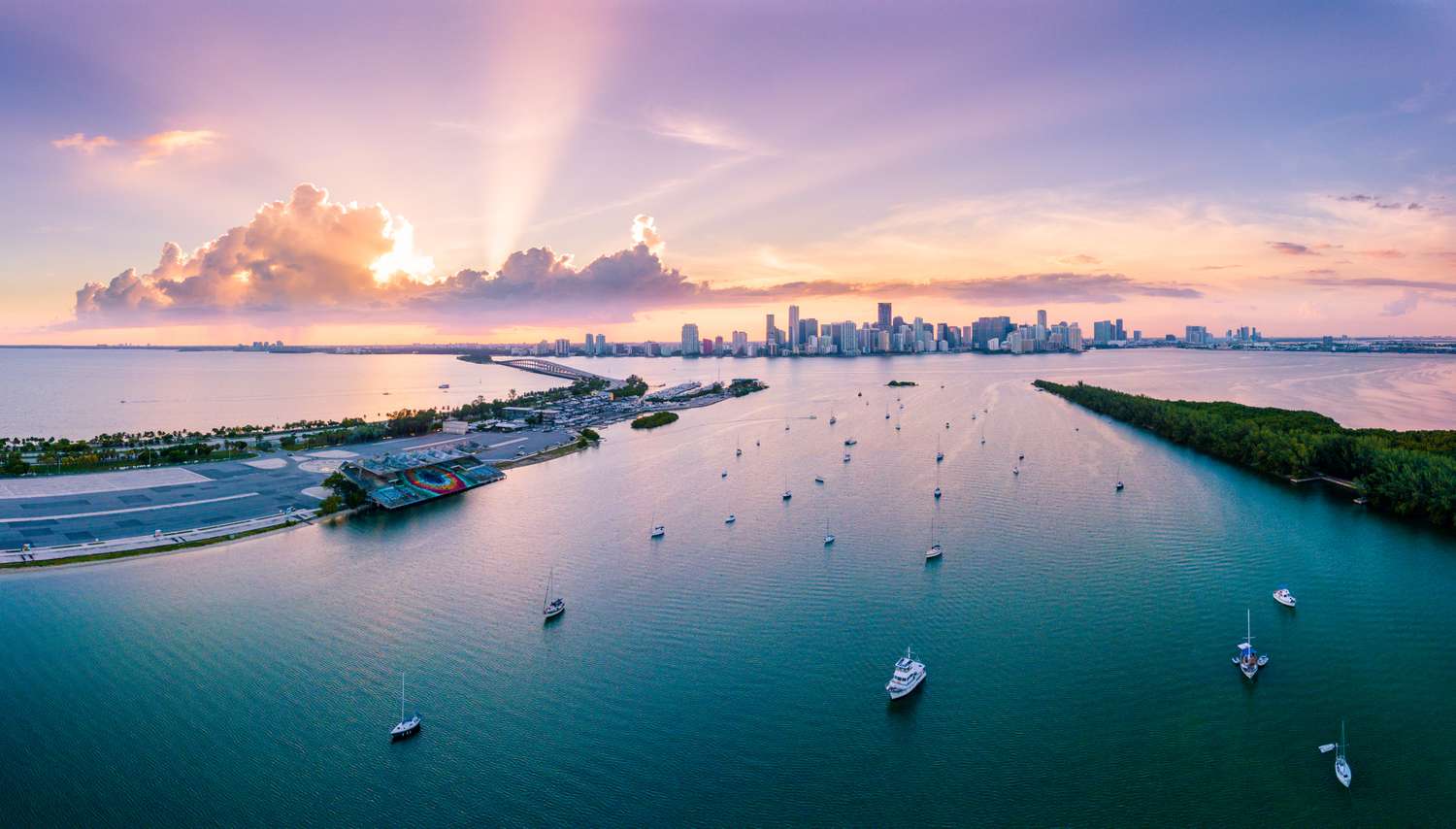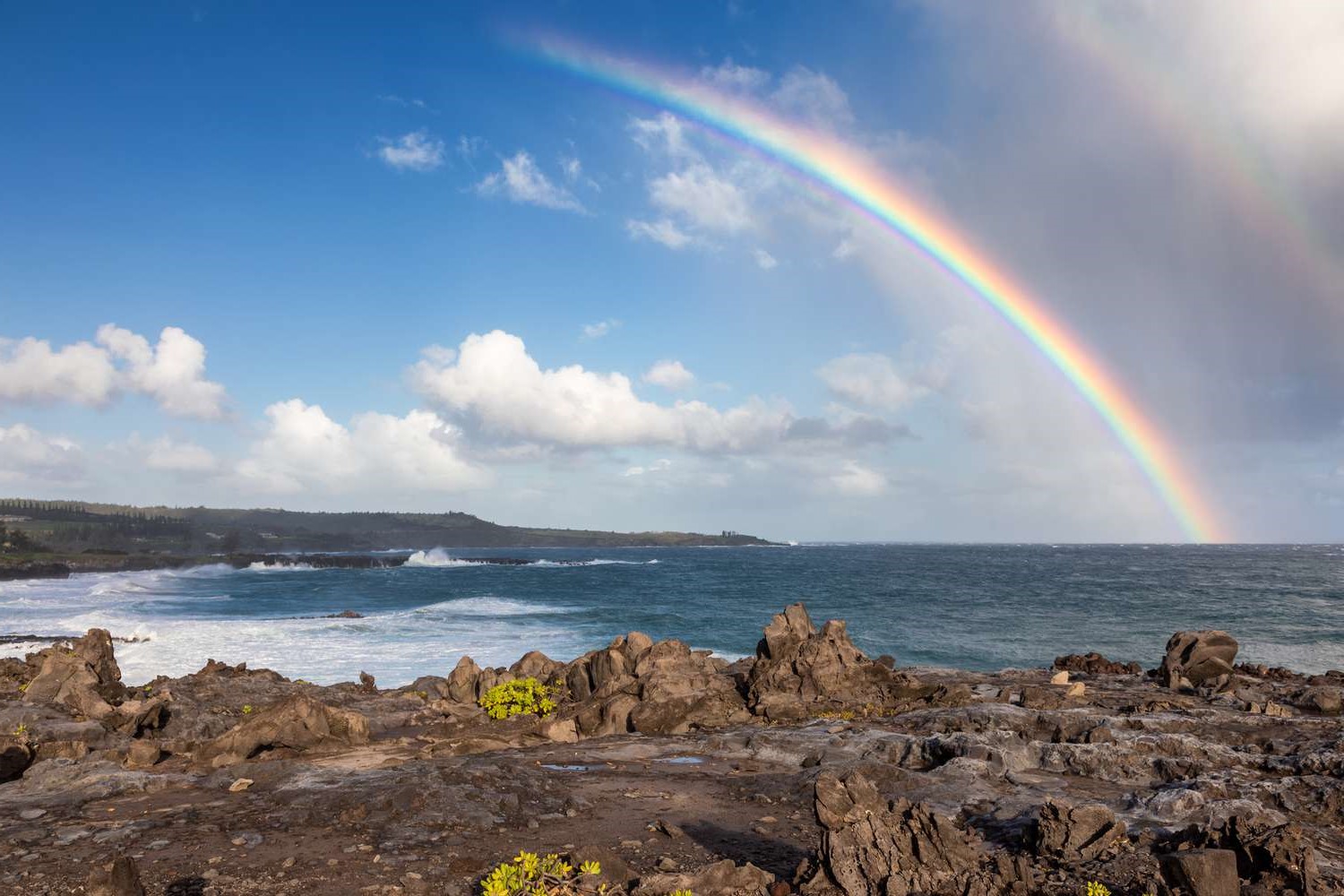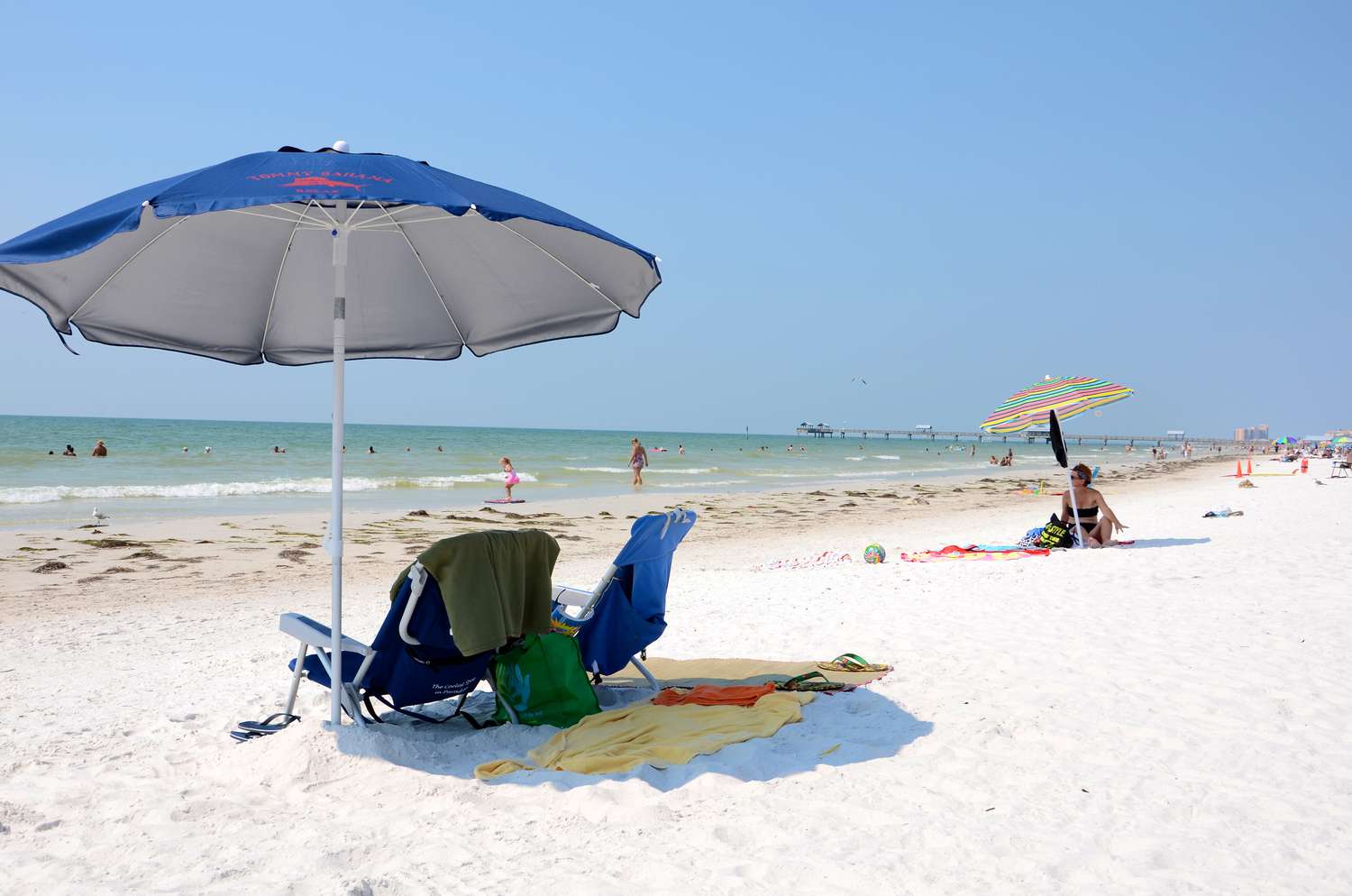Home>Weather and Climate>August Weather In Florida: What To Expect


Weather and Climate
August Weather In Florida: What To Expect
Published: March 4, 2024
Discover the weather and climate in Florida during August. Learn what to expect and how to prepare for your trip.
(Many of the links in this article redirect to a specific reviewed product. Your purchase of these products through affiliate links helps to generate commission for Temperatures.com, at no extra cost. Learn more)
Table of Contents
Understanding Florida's Climate
Florida, the Sunshine State, is renowned for its diverse and unique climate. Situated in the southeastern region of the United States, Florida experiences a subtropical and tropical climate, characterized by distinct wet and dry seasons. The state's geographic location, surrounded by the Gulf of Mexico and the Atlantic Ocean, significantly influences its weather patterns.
The subtropical climate of Florida is marked by mild winters and hot, humid summers. The state's proximity to the equator contributes to its warm temperatures throughout the year. The northern regions of Florida tend to have a slightly cooler climate compared to the southern areas, owing to their distance from the tropics.
The influence of the Gulf Stream, a warm ocean current, plays a pivotal role in shaping Florida's climate. This current moderates the temperatures along the state's coastline, preventing extreme temperature fluctuations. Additionally, the Gulf Stream contributes to the high humidity levels experienced in Florida, particularly during the summer months.
Florida's climate is also influenced by its topography, with the flat terrain and numerous water bodies contributing to the state's humidity and precipitation patterns. The Everglades, a vast wetland ecosystem in southern Florida, further impacts the state's climate by regulating moisture levels and supporting diverse flora and fauna.
The state's climate is characterized by a distinct rainy season, which typically occurs from May to October, and a drier season from November to April. This cyclical pattern of precipitation is a defining feature of Florida's climate, with the summer months experiencing frequent afternoon thunderstorms and high humidity levels.
Understanding Florida's climate is essential for visitors and residents alike, as it provides valuable insights into the weather patterns and seasonal variations that shape daily life in the Sunshine State. Whether planning a vacation or considering a move to Florida, being aware of the state's climate can help individuals make informed decisions and prepare for the unique weather conditions that define this vibrant and dynamic region.
Read more: August Weather In Iceland: What To Expect
Typical August Weather Patterns
In August, Florida experiences distinct weather patterns that are emblematic of its subtropical climate. The month is characterized by high temperatures, abundant sunshine, and frequent afternoon thunderstorms, offering a blend of warmth and precipitation that shapes the state's atmospheric landscape.
During August, Florida basks in the peak of summer, with average temperatures ranging from the mid-80s to low 90s Fahrenheit (29-35°C). The combination of intense heat and high humidity levels creates a sultry and tropical ambiance, making it essential for residents and visitors to seek relief from the scorching sun. The coastal areas benefit from refreshing sea breezes, providing a respite from the sweltering conditions inland.
The Sunshine State lives up to its name in August, with extended periods of sunshine punctuating the days. The ample sunshine allows for a myriad of outdoor activities, from beach outings and water sports to nature excursions and leisurely strolls through the state's diverse landscapes. However, it is crucial to stay hydrated and apply sunscreen generously to mitigate the effects of the sun's potent rays.
One of the defining characteristics of August weather in Florida is the prevalence of afternoon thunderstorms. As the day progresses, the combination of intense heat and moisture-laden air sets the stage for the development of thunderclouds, culminating in dramatic and electrifying thunderstorms. These tempestuous displays often bring torrential downpours, accompanied by thunder and lightning, offering a captivating spectacle of nature's power.
The afternoon thunderstorms not only provide a refreshing break from the heat but also contribute to the state's lush vegetation and diverse ecosystems. The rainfall nourishes Florida's flora and fauna, sustaining its vibrant natural beauty and ecological diversity. However, it is advisable to stay informed about weather forecasts and seek shelter during thunderstorms to ensure safety.
In summary, August in Florida embodies the essence of a subtropical climate, with its blend of high temperatures, abundant sunshine, and afternoon thunderstorms. This unique combination creates a dynamic and captivating atmospheric tapestry, offering a multifaceted experience for residents and visitors alike. Understanding and embracing the typical weather patterns of August in Florida enriches the appreciation of the state's natural splendor and fosters a deeper connection with its captivating climate.
Temperature and Humidity Levels
In August, Florida experiences a climatic embrace characterized by high temperatures and elevated humidity levels. The combination of these two factors creates a sultry and tropical environment that defines the state's atmospheric landscape during this time of the year.
The average temperatures in August range from the mid-80s to low 90s Fahrenheit (29-35°C), enveloping the region in intense heat. This warmth is further accentuated by the high humidity levels prevalent throughout the state. The humidity, often exceeding 70%, contributes to the muggy and sticky feel in the air, amplifying the perception of heat and influencing the body's ability to cool itself through perspiration.
The coastal areas of Florida benefit from the presence of refreshing sea breezes, which provide a welcome reprieve from the sweltering conditions experienced inland. These gentle winds not only offer a cooling effect but also contribute to the overall comfort of individuals engaging in outdoor activities near the coast.
The elevated humidity levels in August can pose challenges for residents and visitors, particularly in terms of physical comfort and well-being. The combination of high temperatures and humidity can lead to increased heat stress, making it essential for individuals to remain vigilant and take necessary precautions to prevent heat-related illnesses. Staying well-hydrated, seeking shade, and avoiding prolonged exposure to direct sunlight are crucial strategies for mitigating the effects of the intense heat and humidity.
Furthermore, the heightened humidity levels can impact individuals' perception of temperature, making it feel hotter than the actual recorded temperature. This phenomenon, known as the heat index, takes into account the combined effects of temperature and humidity on the human body, providing a more accurate representation of how the weather feels to an individual.
Understanding the interplay between temperature and humidity levels is essential for navigating the atmospheric conditions in Florida during August. By being mindful of these factors and taking proactive measures to stay cool and hydrated, residents and visitors can effectively manage the challenges posed by the state's warm and humid climate, ensuring a safe and enjoyable experience amidst the Sunshine State's captivating weather.
Rainfall and Thunderstorms
August in Florida heralds the peak of the state's rainy season, characterized by frequent and dramatic afternoon thunderstorms. The combination of intense heat and high humidity levels sets the stage for the development of towering cumulonimbus clouds, culminating in electrifying displays of thunder and lightning. These atmospheric phenomena not only contribute to the state's unique weather patterns but also play a pivotal role in sustaining its lush landscapes and diverse ecosystems.
The afternoon thunderstorms in Florida are a spectacle to behold, offering a captivating fusion of natural elements. As the day progresses, the buildup of heat and moisture-laden air creates an environment conducive to the formation of thunderclouds. These towering formations, often reaching impressive heights, serve as harbingers of the impending tempest, signaling the arrival of the afternoon thunderstorms that are emblematic of August in the Sunshine State.
The thunderstorms in Florida are renowned for their intensity, often accompanied by torrential downpours, gusty winds, and vivid displays of lightning. The rhythmic percussion of rain, the electrifying crackle of lightning, and the reverberating rumble of thunder combine to create a symphony of nature's forces, captivating observers and evoking a sense of awe and wonder. These atmospheric theatrics not only provide a refreshing break from the sweltering heat but also contribute to the state's ecological vitality.
The rainfall brought by the afternoon thunderstorms plays a crucial role in sustaining Florida's diverse ecosystems. The precipitation nourishes the state's flora, replenishing its verdant landscapes and supporting a rich tapestry of plant life. Additionally, the rainwater sustains the intricate network of water bodies, including rivers, lakes, and wetlands, which are integral to Florida's ecological balance. The replenishment of these water sources is essential for supporting the state's diverse wildlife and maintaining the delicate equilibrium of its natural habitats.
While the afternoon thunderstorms add a dynamic and captivating dimension to Florida's atmospheric canvas, it is important for residents and visitors to exercise caution and stay informed about weather forecasts. The sudden onset of thunderstorms, accompanied by intense rainfall and lightning, necessitates a proactive approach to ensuring safety. Seeking shelter during thunderstorms, avoiding open areas, and refraining from water-based activities during inclement weather are essential precautions to mitigate the risks associated with these atmospheric phenomena.
In essence, the rainfall and thunderstorms that characterize August in Florida are not merely transient weather events but integral components of the state's climatic identity. Their impact extends beyond the immediate spectacle, contributing to the vitality of Florida's ecosystems and shaping the intricate tapestry of its natural landscapes. Embracing and respecting the role of these atmospheric phenomena enriches the appreciation of Florida's environmental diversity and underscores the profound influence of weather on the state's ecological harmony.
Hurricane Season Precautions
Florida, renowned for its captivating climate, is also susceptible to the impact of hurricanes, especially during the peak of the Atlantic hurricane season, which spans from June to November. As August unfolds, it marks a pivotal juncture in the hurricane season, necessitating heightened vigilance and proactive measures to ensure preparedness and safety in the face of potential tropical storms and hurricanes.
Read more: August Weather In Orlando: What To Expect
Stay Informed
Remaining informed about weather forecasts and updates from reliable sources is paramount during the hurricane season. Monitoring the progress of tropical disturbances and staying abreast of official advisories and warnings enables individuals to make informed decisions and take timely action in response to evolving weather conditions.
Emergency Supplies
Stocking up on essential supplies is a fundamental aspect of hurricane preparedness. Creating an emergency kit that includes non-perishable food, potable water, medications, first-aid supplies, flashlights, batteries, and important documents ensures readiness in the event of a hurricane. Additionally, securing adequate supplies for pets and livestock is crucial for their well-being during emergencies.
Evacuation Planning
Developing a comprehensive evacuation plan is imperative for individuals residing in hurricane-prone areas. Familiarizing oneself with designated evacuation routes, shelters, and community resources facilitates a swift and organized response to evacuation orders. It is essential to have a clear understanding of evacuation procedures and to adhere to official directives issued by local authorities.
Home Protection
Safeguarding homes and properties against potential hurricane damage is a critical aspect of hurricane preparedness. Securing windows and doors, reinforcing roofing structures, and clearing outdoor spaces of potential projectiles minimize the risk of structural damage during high winds. Additionally, trimming trees and securing outdoor furniture and equipment mitigates potential hazards posed by flying debris.
Communication and Coordination
Establishing communication channels with family members, neighbors, and local authorities is essential for maintaining connectivity and coordination during hurricane events. Creating a communication plan, designating meeting points, and sharing contact information facilitates efficient communication and ensures that everyone is accounted for and informed during emergencies.
Community Support
Engaging with the local community and participating in preparedness initiatives fosters a collective approach to hurricane readiness. Collaborating with neighbors, volunteering with local response organizations, and contributing to community resilience efforts strengthens the overall preparedness and response capacity of the community.
Post-Hurricane Recovery
Preparing for the aftermath of a hurricane is as crucial as readiness for the event itself. Having a post-storm recovery plan that includes access to clean water, power restoration considerations, and addressing potential infrastructure damage enables a smoother transition to recovery and restoration efforts.
In essence, embracing a proactive and comprehensive approach to hurricane preparedness is essential for navigating the challenges posed by the Atlantic hurricane season. By prioritizing readiness, staying informed, and fostering community resilience, individuals can effectively mitigate the impact of hurricanes and safeguard their well-being amidst the dynamic atmospheric landscape of Florida.
Packing Tips for August Travel
Packing for travel in August requires thoughtful consideration of Florida's climate and the activities planned during the trip. The Sunshine State's characteristic subtropical weather, with its high temperatures, humidity, and propensity for afternoon thunderstorms, necessitates strategic packing to ensure comfort, preparedness, and enjoyment throughout the journey.
Lightweight and Breathable Clothing
Selecting lightweight and breathable clothing is essential for navigating Florida's August weather. Opt for moisture-wicking fabrics that facilitate evaporation and provide relief from the heat and humidity. Breathable tops, such as cotton or linen shirts, and comfortable bottoms, such as shorts or lightweight pants, are ideal choices for staying cool and comfortable during outdoor excursions.
Sun Protection Essentials
Given the ample sunshine in August, packing sun protection essentials is paramount. Include broad-spectrum sunscreen with a high SPF, wide-brimmed hats for sun protection, and UV-protective sunglasses to shield your eyes from the intense sunlight. These items are indispensable for safeguarding against the sun's potent rays and minimizing the risk of sunburn and heat-related discomfort.
Rain Gear and Waterproof Accessories
In anticipation of the afternoon thunderstorms that characterize August in Florida, packing rain gear and waterproof accessories is prudent. Compact umbrellas, lightweight rain jackets, and waterproof footwear are valuable additions to your travel ensemble. These items ensure that you can continue exploring and enjoying outdoor activities, even amidst the occasional downpours.
Hydration and Cooling Essentials
Staying hydrated and cool is essential in Florida's warm and humid climate. Packing a reusable water bottle to stay hydrated throughout the day is crucial. Additionally, consider bringing a portable handheld fan or cooling towel to provide instant relief from the heat during outdoor adventures. These items contribute to your comfort and well-being, allowing you to make the most of your August travels.
Insect Repellent and Protective Gear
Florida's lush landscapes and diverse ecosystems make insect repellent and protective gear indispensable for outdoor activities. Packing insect repellent containing DEET or picaridin helps deter mosquitoes and other biting insects. Lightweight, long-sleeved shirts and pants offer added protection against insect bites while exploring nature reserves and outdoor trails.
Versatile Footwear
Selecting versatile footwear that combines comfort and functionality is essential for August travel in Florida. Opt for breathable and supportive shoes suitable for walking, hiking, and exploring various terrains. Sandals with secure straps are ideal for beach outings, while lightweight sneakers or hiking shoes are well-suited for nature trails and urban exploration.
Travel-Friendly Accessories
Incorporate travel-friendly accessories into your packing list to enhance convenience and organization. Items such as a compact travel backpack, reusable shopping bags, and travel-sized toiletries contribute to seamless and efficient travel experiences. Additionally, packing a portable phone charger and a waterproof phone case ensures connectivity and protection for your electronic devices.
By incorporating these packing tips into your August travel preparations, you can optimize your comfort, preparedness, and enjoyment while exploring the diverse landscapes and vibrant culture of Florida. Strategic packing tailored to the state's climate and seasonal nuances sets the stage for a memorable and enriching travel experience amidst the captivating atmospheric tapestry of the Sunshine State.
Activities and Events in August
August in Florida offers a myriad of engaging activities and vibrant events that showcase the state's diverse cultural tapestry, natural splendor, and dynamic recreational opportunities. From coastal escapades and outdoor adventures to cultural celebrations and culinary delights, the Sunshine State beckons residents and visitors alike to immerse themselves in a rich tapestry of experiences that capture the essence of August in Florida.
Read more: August Weather In Las Vegas: What To Expect
Beach Escapades
Florida's renowned coastline, adorned with pristine beaches and crystalline waters, sets the stage for idyllic beach escapades. Whether it's basking in the sun, indulging in water sports, or savoring leisurely strolls along the shore, the state's coastal gems offer an array of activities for beach enthusiasts. From the iconic shores of Miami Beach to the tranquil seascapes of Sanibel Island, August invites beachgoers to revel in the coastal allure and embrace the quintessential Florida experience.
Nature Exploration
August provides an opportune time for nature enthusiasts to explore Florida's diverse ecosystems and natural wonders. From immersive wildlife encounters in the Everglades to tranquil paddling excursions in the state's scenic waterways, nature exploration abounds. The lush landscapes, teeming with biodiversity, beckon adventurers to embark on eco-friendly escapades, fostering a deeper appreciation for Florida's ecological richness and environmental conservation efforts.
Cultural Festivals
The cultural tapestry of Florida comes alive in August with an array of festivals and events celebrating the state's heritage and diversity. From vibrant music festivals and art exhibitions to culinary showcases and community gatherings, the cultural calendar is replete with opportunities to immerse oneself in the vibrant traditions and creative expressions that define Florida's cultural mosaic. These events offer a glimpse into the state's artistic vibrancy and provide a platform for fostering community connections and cross-cultural exchanges.
Culinary Experiences
August presents a delectable array of culinary experiences, showcasing Florida's gastronomic delights and diverse culinary heritage. From seafood festivals highlighting the state's coastal flavors to farmers' markets brimming with fresh produce, the culinary landscape offers a tantalizing journey for food enthusiasts. Exploring local eateries, savoring farm-to-table dining experiences, and indulging in culinary tours provide a flavorful immersion into Florida's culinary tapestry.
Family-Friendly Attractions
August in Florida is synonymous with family-friendly attractions that cater to all ages. From theme parks and interactive museums to wildlife sanctuaries and educational excursions, the state offers a wealth of family-oriented activities. Engaging in interactive experiences, embarking on wildlife encounters, and exploring educational attractions foster lasting memories and create opportunities for shared adventures amidst Florida's diverse recreational offerings.
Water-Based Adventures
The abundance of water bodies in Florida sets the stage for a host of water-based adventures in August. From snorkeling and diving in vibrant marine ecosystems to kayaking and paddleboarding in scenic waterways, the state's aquatic playground beckons water enthusiasts. Exploring underwater wonders, embarking on eco-tours, and partaking in water-based activities offer a refreshing and invigorating way to embrace Florida's aquatic allure.
In essence, August in Florida unfolds as a tapestry of engaging activities and vibrant events that cater to diverse interests and passions. Whether it's savoring coastal serenity, immersing in cultural celebrations, or embarking on outdoor escapades, the month invites individuals to partake in a rich tapestry of experiences that encapsulate the essence of Florida's dynamic and captivating atmosphere.









